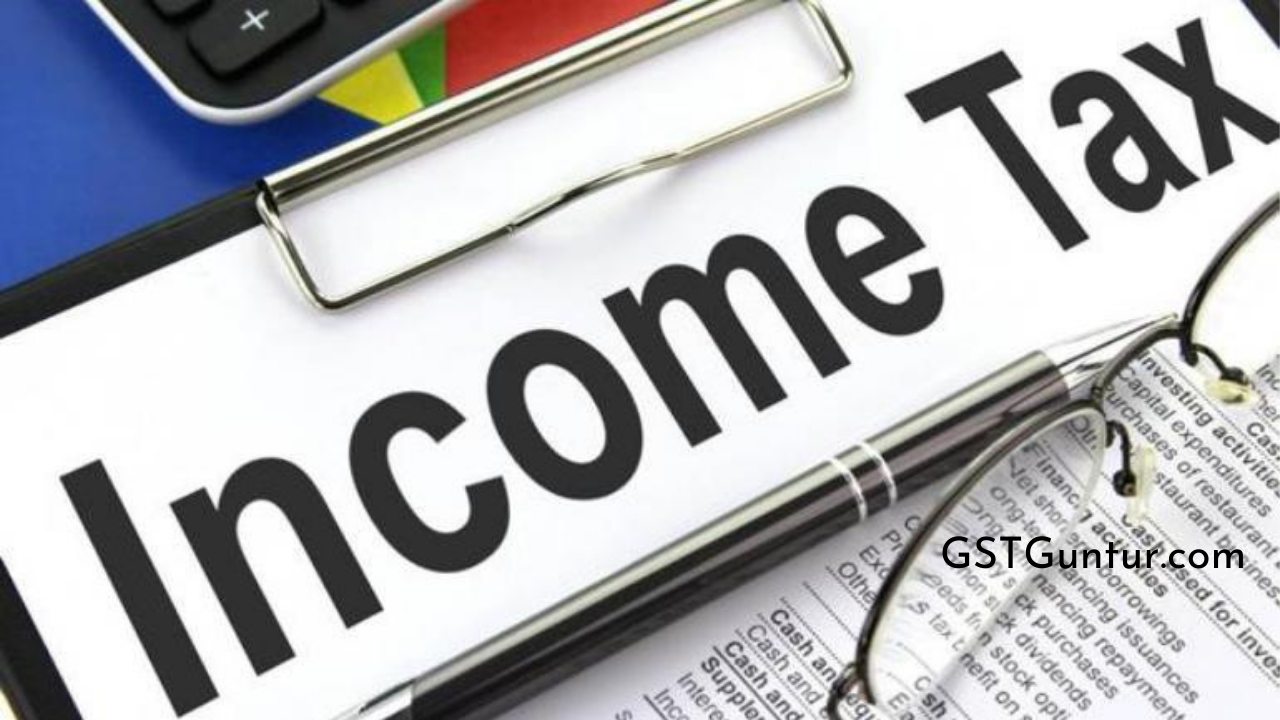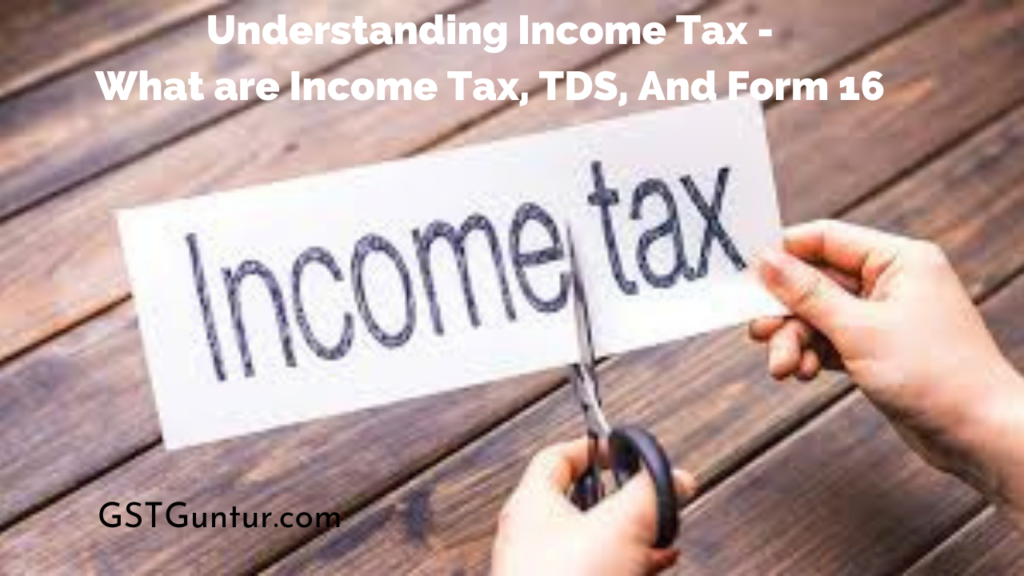Understanding Income Tax: Tax is a form of financial charge or fee charged by the Government from its citizens for providing better public infrastructure and carry out public welfare services. Tax can be of two types, i.e., direct tax and indirect tax. Indirect tax is collected from the citizens on the consumption or usage of goods and services. At the same time, a direct tax is a tax collected directly from individuals or organizations based on their incomes.
Income tax is a form of direct tax levied by the government on the incomes of its citizens. Income tax forms a large part of the revenue for the Government. As the Income-tax is collected based upon the incomes of the individuals, so more the income more the tax.
For an Individual, filing an income tax return is no less than achieving a huge milestone. However, without proper knowledge and understanding of filing and computation of tax, it can become hectic for a first-timer. To help you understand the basics of income tax, its implications and computation, we present this article. In this article, we will discuss income tax, types of incomes, computation of tax, TDS, and other tax-related terms.
Basics of Income Tax
Income Tax, as we know, is a direct form of tax levied by the government on the income of its citizens. For an individual, it is mandatory to file a return on his/her income. The income on which income tax is computed is known as taxable income. Income as per the Income-tax act is segregated into five heads: salary income, income from house property, income from business and profession, Income from capital gains, and income from other sources. Similarly, the income tax act divides taxpayers into different categories: Individuals, Hindu Undivided Family, Association of Persons, Body of Individuals, Firms, and Companies.
Types Or Sources of Income
In the paragraph mentioned above, we learned that income is divided into five heads as per the Income Tax Act. Now, let’s discuss each head of income in detail:
- Salaried Income: According to the Income Tax Act, an income can be considered salary only if an employer and employee relationship exist between the payer and the payee. The Income-tax act defined salary as a form of monetary compensation, which can be in the form of wage, gratuity, allowances, commission, or leaves encashment. An income can only be considered under the head salary if the money received by the taxpayer is a result of an employment agreement.
- Income From House Property: It is another head of income under the income tax act. Under this head of income, any commercial or residential property held by the taxpayer is taxed. Income received from the property will be considered a source of income and taxed under the act. According to income under house property, even if your property is not let out, it is considered to be generating rent and is taxed.
- Income From Business and Profession: According to the income tax act, any income from a business or profession is considered under the head Income from Business and Profession. According to the tax laws, any proceeds of the business or profession shall be taxed accordingly. Taxable income under the head income from business and profession is calculated by subtracting the expenses of the business or profession from its income.
- Income From Capital Gains: It is the fourth head of Income under the Income-tax act. Here, the income received from the sale of capital assets, either movable or immovable, is deemed to be taxed. The capital gains can be from selling stocks, bonds, gold, land and property, or any other asset. The Income from capital gains is divided into two heads depending on the time period of the asset: Long term capital gains and short-term capital gains.
- Income From Other Sources: It is the fifth and last head of income under the tax law. Under this head, the income derived from any other sources other than the four sources mentioned above are considered for tax purpose. Some incomes considered under Income from other sources are income from lottery, interest from bank deposits, senior citizens saving schemes, etc.

Income Tax Slabs
According to the Income Tax Act, there are different tax slabs under which the amount of income tax is computed of a taxpayer. The following table describes the tax slabs for individuals below the age of 60:
| Income Tax Slab | Income Tax Slab Rates |
| When Income is less than 2.5 lakhs | NIL |
| When Income is more than 2.5 lakhs but less than 3.00 lakhs | 5% of the Income |
| When Income is more than 3.00 lakhs but less than 5.00 lakhs | 5% of the Income |
| When Income is more than 5.00 lakhs but less than 7.5 lakhs | 10% of the Income |
| When Income is more than 7.5 lakhs but less than 10.00 lakhs | 15% of the income |
| When Income is more than 10.00 lakhs but less than 12.50 lakhs | 20% of the income |
| When Income is more than 12.50 lakhs but less than 15.00 Lakhs | 25% of the Income |
| When Income exceeds 15.00 Lakhs | 30% of the Income |
Important Dates for Taxpayers
In the above paragraphs, we learned about some of the basics of Income-tax. Now, the essential information for a taxpayer is the dates of filing income tax. Every taxpayer needs to be aware of the dates to avoid any future disputes and also late fees. But, before knowing the dates, one needs to know the periods of income tax return filing. So, there the two periods. One is termed as the previous year, and the other is termed as the Assessment Year. Let’s discuss both in details:
- Previous Year: In terms of tax calculation or computation, the Previous Year is the year in which an individual derives the income to be computed. It is also known as the financial year or tax year. It basically a 12 month period which starts from 1st April and ends on 31st March of the following year. A financial year or previous year is always mentioned by combining two subsequent years, such as 2020-21. Here, the year starts from 1st April 2020 and ends on 31st March 2021.
- Assessment Year: It is one of the most important terms related to tax computation. Assessment year is the year in which the income of an individual is assessed, or in simple words, it is the year in which an individual pays income tax on the income he derived in the previous year. The assessment year is the year that is immediately after the financial year. For example, for the financial year 2020-21, the assessment year will be 2021-22.
The taxpayer should keep in mind that the last date of filing an ITR is 31st July of the ongoing assessment year. It should be noted that the last date of filing ITR is 30th September for taxpayers whose return statement are subject to audit. One should also keep in mind that the last filing date may be changed as per the situation prevailing in the country.
Tax Deducted At Source And Form 26AS
TDS is the abbreviated form of Tax Deducted At Source. In simple words, TDS is the tax deducted by the person making the payment. TDS is generally related to salaried income. The employer deducts a certain amount of money from the salary of the employee. The percentage of the amount to be deducted as TDS is prescribed by the Income-tax department.
In some cases where a person earns interest on bank deposits, the bank also deducts TDS. But in the case of a bank, the TDS percentage is 10% of the interest. Here are some of the key points relating to TDS:
- TDS is deducted by employers on salary payments and by banks on interest payments. A person may also deduct TDS when he/she buys property or pays rents exceeding ₹50,000.
- A person can file a self-declaration in form 15H or 15G to avoid TDS if his total income does not exceed the taxable income.
- After deducting TDS, the employer or the bank issues form 16 or 16 A, which acts as proof of such deduction.
- TDS is also updated in form 26AS, and one can claim TDS while filing the return.
Form 16
In the earlier paragraphs, we discussed TDS. Now let’s discuss form 16, an essential part of TDS. Form 16 is an essential certificate issued to an employee by his/her employer as proof of the Tax deducted at the source. Form 16 demonstrates the salary paid to the employee and the Tax amount deducted by the employer. It acts as evidence that the tax amount has been deposited with the government on behalf of the employee.
Form 16 has two parts, 16 A and 16 B, the 16 A of the form provides details of the quarterly TDS deducted and deposited by the employer. It also displays the PAN number, TAN number and other information of the employer.
In contrast, 16 B of form 16 is to be prepared by the employer for each employee. 16 B describes the proper break up of salary paid to the employee and the deductions under chapter VI A.
Details Required for Filing Form 16
following are the details that are required for filing form 16:
- Allowances paid to the employee that is exempted under section 10.
- Break up of salary paid to the employee under section 16.
- The taxable salary.
- Income from house property reported by the employee for TDS.
- Income under the head other sources reported by the employee.
- Break up of deductions under section 80C.
- The aggregate of deductions under section 80C.
- Net tax payable or tax refund.
